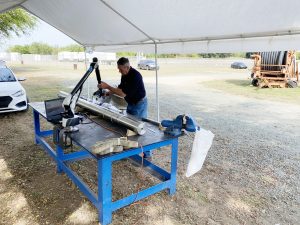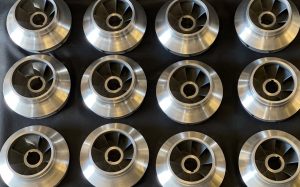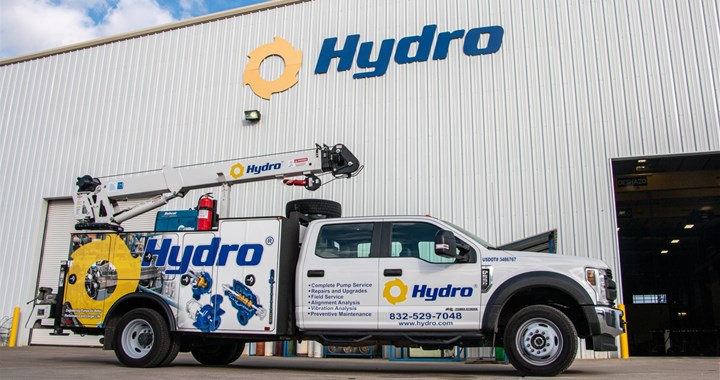 Hydro was called on to reverse engineer a large circulating water pump in the Caribbean to supply parts for refurbishment. The lead times for receiving parts from the original equipment manufacturer (OEM) were excessive. More concerning, the suction bell provided by the OEM had failed during service. All internal ribs were lost, and the bearing holder was found loose within the assembly. Continue reading
Hydro was called on to reverse engineer a large circulating water pump in the Caribbean to supply parts for refurbishment. The lead times for receiving parts from the original equipment manufacturer (OEM) were excessive. More concerning, the suction bell provided by the OEM had failed during service. All internal ribs were lost, and the bearing holder was found loose within the assembly. Continue reading
Case Studies
Optimum Flow – Expert Solutions When It’s Critical
A major county in California found itself in a crisis when its irrigation pumps could not produce the required performance, cutting off critical water supply to the reservoirs and aqueducts. These pumps suffered from high vibration and repeated failures characterized by extreme wear to the propellers, shafts, and bearings.
Circulating Water Pump Repair & Refurbishment
 A major utility company had a Foster Wheeler 60 DF horizontal split case circulating water pump that required repair. They decided to complete the refurbishment during a 14-day unit outage by using the Hydro South service center. The plant had a spare impeller, shaft, and shaft sleeves in inventory. The availability of spare parts usually facilitates an efficient and trouble-free repair. Unfortunately, it was discovered that the parts available were not properly designed for use in the existing pump. Continue reading
A major utility company had a Foster Wheeler 60 DF horizontal split case circulating water pump that required repair. They decided to complete the refurbishment during a 14-day unit outage by using the Hydro South service center. The plant had a spare impeller, shaft, and shaft sleeves in inventory. The availability of spare parts usually facilitates an efficient and trouble-free repair. Unfortunately, it was discovered that the parts available were not properly designed for use in the existing pump. Continue reading
Pump Testing Overcomes Challenging Suction Configuration
 A municipal water treatment plant recently had one of their service water pumps refurbished. The refurbished pump is a single-stage, bottom suction BB1 (between bearing) pump with a double suction impeller. In order to validate the performance of the pump, the plant requested testing services from the Hydro Performance Test Lab. The testing services included a Hydraulic Institute certified performance test, a Net Positive Suction Head (NPSH) test, and a bearing housing vibration test. Continue reading
A municipal water treatment plant recently had one of their service water pumps refurbished. The refurbished pump is a single-stage, bottom suction BB1 (between bearing) pump with a double suction impeller. In order to validate the performance of the pump, the plant requested testing services from the Hydro Performance Test Lab. The testing services included a Hydraulic Institute certified performance test, a Net Positive Suction Head (NPSH) test, and a bearing housing vibration test. Continue reading
State of the Art Parts: Impeller with New Hydraulic Design
 State of the Art Parts: Hydro Parts Solutions recently supplied a new impeller as part of a project to improve the operation of a pump that was not performing per the OEM curve. The first step in the process was reverse-engineering the used sample impellers. The reverse-engineered model was used by Hydro’s Global Engineering team to perform a computational fluid dynamics (CFD) analysis to determine the best possible hydraulic design for the plant’s expected operating range. Continue reading
State of the Art Parts: Hydro Parts Solutions recently supplied a new impeller as part of a project to improve the operation of a pump that was not performing per the OEM curve. The first step in the process was reverse-engineering the used sample impellers. The reverse-engineered model was used by Hydro’s Global Engineering team to perform a computational fluid dynamics (CFD) analysis to determine the best possible hydraulic design for the plant’s expected operating range. Continue reading





